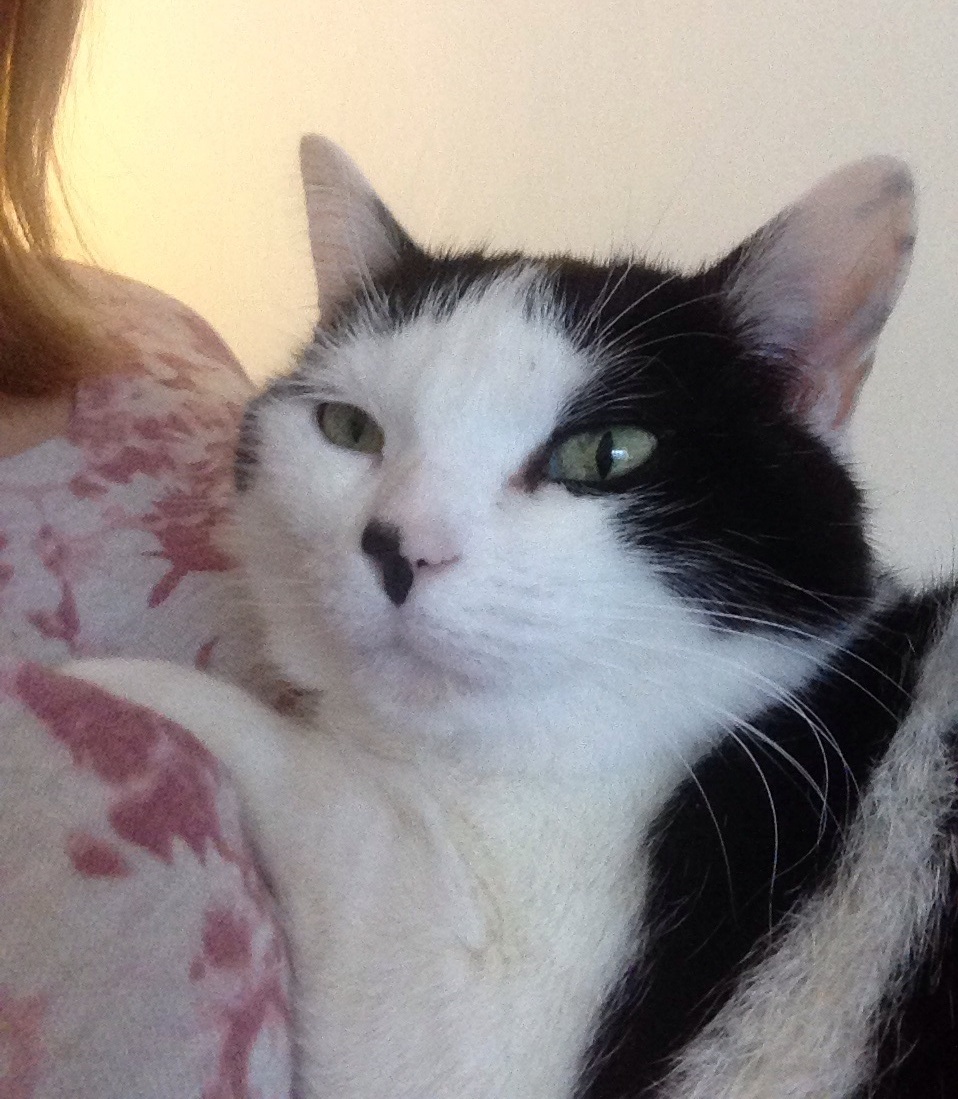For me, there was no question. She was our first baby, brought into the house when our marriage was young and we wanted to share our household but weren’t ready for the commitment of nappies, etc. Of course, she was coming with us to Qatar!
This is Pixie, our 9 year old moggie, in her favourite human-hug position.

She’s the most affectionate little cat I’ve ever met, wanting to sit on your knee regardless of laptop placement or, God forbid, the random cup of tea. She made our lives blossom, slept on our chests, woke us by ploughing into the room at night after hanging on the door handle, purred loudly when she had her tummy rubbed, and didn’t flinch when we decided to test her not once but three times by adding noisy distractions to the household.
This was her just tonight during dinner, hoping for a stray meatball to pass in her direction.
So, despite questioning of our sanity (and cat welfare credentials) by family and friends, yes, we’re bringing Pixie to Qatar. We couldn’t imagine setting up a household without her, and it certainly couldn’t be called home without a faint dusting of her black and white fur.
Some things I’ve learned about cat travel though, that might be useful for other expats planning this journey:
- It’s expensive. More expensive than child travel, quite frankly. Thank God we were already committed to the decision, because having seen the upcoming bill for her transport, I’d be having serious second thoughts if we weren’t determined to proceed!
- There’s paperwork. Lots and lots of paperwork. I started sorting through this myself but it just seemed to require too much back and forth between Qatar and here, so we’ve got agencies helping us at both ends (yup, I said it was expensive!). But some tips:
- Get a Pet Passport. It contains details of vaccinations and microchip. Apparently there’s even a space for a photo, which you can laminate! I haven’t quite got that organised yet!
- Cats need a rabies vaccination at least 30 days before travel. Praise be (!) for her sudden diagnosis of osteoarthritis, and accompanying medical bill, that led to a chance conversation and her getting her vaccination with one day to spare! Organised, moi? Another reason why it’s good to have an agency to help!!
- Qatar requires an import permit, secured at most 14 days pre-departure. You can find details of how to get this here or, as I may have mentioned, you can get an agency in Qatar to help. We’re using Qatar Pet Relocators who have been hugely helpful to date.
- From a departure perspective, we’re using another agency called Multi Cargo Ltd to arrange Pixie’s flights and transport. They’ll collect her at the airport (or house in advance) and make sure she makes her flights.
Did you know that cats can actually travel on some airlines as cabin baggage in a container under your seat? I can’t imagine how that could be less stressful than being in the cargo hold, when they can see you but not get out?
And apparently, the only animals that get to be VIPs on board a plane are falcons. If you haven’t already seen it, this is a photo that recently went viral. Lottie’s comment was “ooh look at them all. They all have their own TVs!” She has done far too much Ryanair travel!
 Read more: http://edition.cnn.com/2017/02/01/middleeast/falcons-planes-middle-east/
Read more: http://edition.cnn.com/2017/02/01/middleeast/falcons-planes-middle-east/
We’ll follow the obvious steps on our arrival: keeping her indoors for six weeks or so until she’s settled. She’s mainly an indoors cat anyway.
One last tip, courtesy of the doctor who gave us our (human) travel vaccinations, is to keep her water bowl inside or it becomes potentially a mosquito breeding group.
We’ll keep you posted on her journey and how she settles in. We’d be lost without her.
If you’ve travelled with your pet, I’d love to hear your stories or tips. Share them below!




